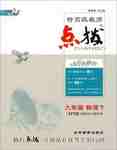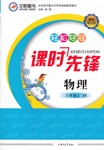جâؤ؟ؤعبف
¼ظ¶¨س¢سï؟خةدہدت¦زھاَح¬×ہض®¼ن½»»»ذق¸ؤ×÷خؤ£¬اëؤمذق¸ؤؤمح¬×ہذ´µؤزشدآ×÷خؤ،£خؤضذ¹²سذ10´¦سïرش´يخَ£¬أ؟¾نضذ×î¶àسذء½´¦،£أ؟´¦´يخَ½ِةو¼°ز»¸ِµ¥´تµؤشِ¼س،¢ة¾³»ٍذق¸ؤ،£
شِ¼س£؛ب±´ت´¦¼سز»¸ِآ©´ت·û؛إ(،ؤ) ,²¢شعئندآأوذ´³ِذق¸ؤ؛َµؤ´ت،£
ة¾³: °ر¶àسàµؤ´تسأذ±دك( \ £©µô،£
ذق¸ؤ£؛شع´يµؤ´تدآ»®ز»؛لدك£¬²¢شع¸أ´تدآأوذ´³ِذق¸ؤ؛َµؤ´ت،£
×¢زâ£؛1. أ؟´¦´يخَ¼°ئنذق¸ؤ¾ù½ِدقز»´ت£»
2. ض»شتذيذق¸ؤ10´¦£¬¶àصك(´سµع11´¦ئً) ²»¼ئ·ض،£
One day our English teacher asked US to list other classmate1،¯s names on a piece of paper.Then we are told to write down the nicest thing we could think of about each name. It took US 40 minutes finish fhe task. Before we had left the classroom,we handed out the papers. Then the teacher listed how everyone else had said about a same person. Two days after,she gave each student his or her list. After read the lists,the entire class became excited. UI didn't know others liked me so much،±. I said to me when I read my list.
31. ،other classmate's ، classmate،¯s ،ْ classmates،¯
32. ... we are told ... are ،ْ were
33. ... finish the task. finish ا°¼س to
34. ... we had left ... ب¥µôhad
35. ... we handed out... out ،ْ in
36. ... listed how everyone ... how ،ْ what
37. ... a same person. a ،ْ the
38. Two days after ... after ،ْ later
39. After read ... read،ْ reading
40. ... said to me ... me ،ْ myself

 جط¸ك¼¶½جت¦µم²¦دµءذ´ً°¸
جط¸ك¼¶½جت¦µم²¦دµءذ´ً°¸ خؤ¾´ح¼تé؟خت±دب·ودµءذ´ً°¸
خؤ¾´ح¼تé؟خت±دب·ودµءذ´ً°¸